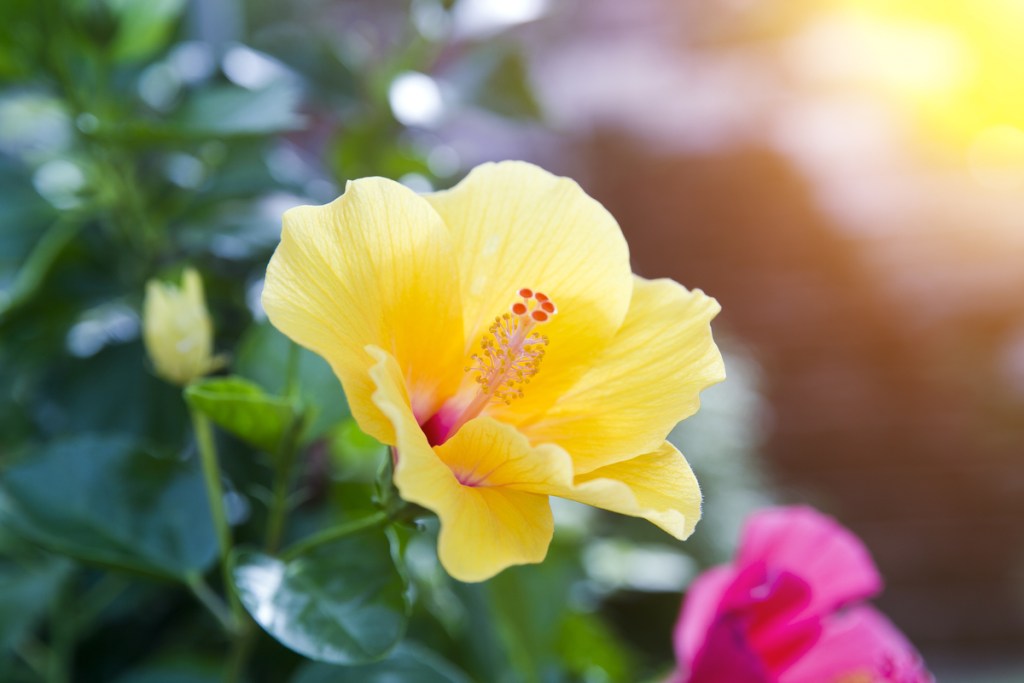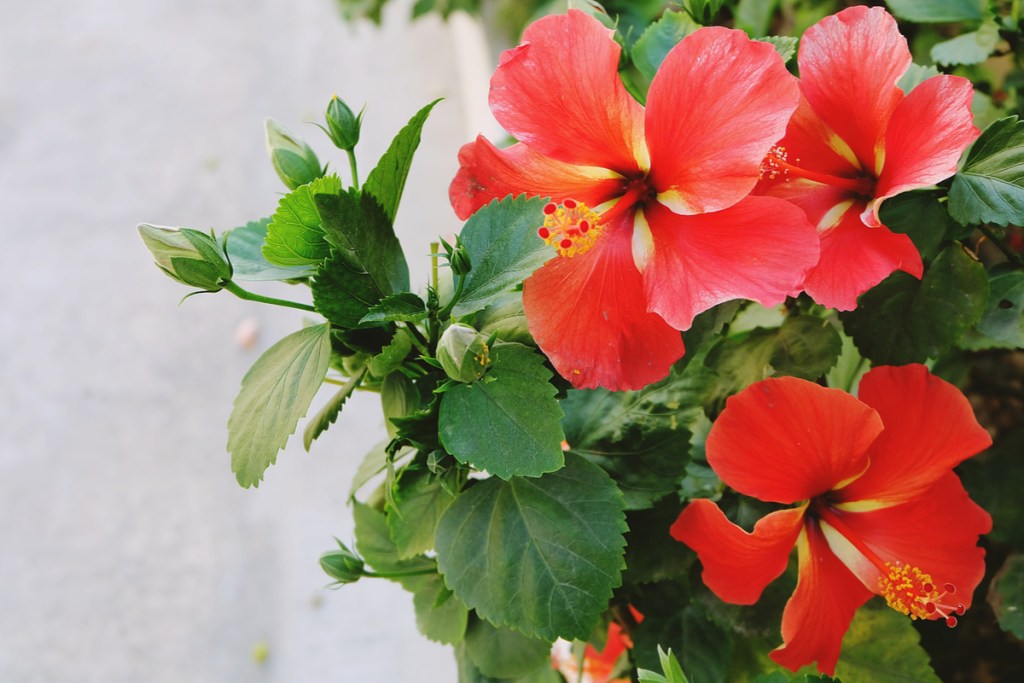Garden pests can cause a lot of damage to your plants, by chewing holes in them, as well as spreading diseases. There are a lot of ways to get rid of them and keep them away for good, but many insecticides and pesticides include harsh chemicals that are not good for the environment. On top of that, some plants, like hibiscuses, are too sensitive for sprays like that! If you need help keeping pests away from your hibiscus plants, here’s what you need to know about insecticide for hibiscus.

Why are specialized sprays so important?
Insecticide or pesticide sprays have a job to do. They’re made specifically to kill insects and keep them away from your plants. Most plants can withstand the chemicals used in these sprays without issue, but some plants, like hibiscus, are particularly sensitive.
Using a regular spray on a delicate plant could lead to damage. It may cause mild, cosmetic damage, but it can also lead to severe problems that damage the plant’s ability to thrive. This is more likely to happen if you use sprays on delicate plants repeatedly. You can avoid this by not planting sensitive plants or by forgoing the use of sprays in general, but the best course of action is to just buy sprays made for sensitive plants.

What should you look for when picking a spray?
Sprays for delicate plants will often say so on the label, but there are other words and phrases that can help clue you in, too. Look for bottles that say they’re organic or don’t use harsh chemicals. This is an indicator that this spray is likely suitable for more delicate plants. Look for certifications from organizations such as OMRI, which double-check that companies are being truthful about their ingredients. When in doubt, do a quick search into the company itself, looking for red flags such as negative reviews or recent scandals or recalls involving products.
The words plant-safe or garden-safe can sometimes be a good indicator, but it isn’t as reliable as other indicators. This is because, technically, any pesticide for use in a garden should be plant-safe. However, plants that are more sensitive may still react to these sprays. Look for these phrases in combination with other indicators.
When in doubt, check the ingredients. Neem oil and pyrethrin are both derived from plants and are safe to use on your delicate hibiscus plants, but they aren’t the only natural insecticides. There’s no shame in looking up specific ingredients if you don’t recognize them! It’s better to be safe with a search history full of chemical names than sorry with a garden full of chemical burns.
Earth’s Ally Insect Control
This spray checks all the boxes for delicate plants. It is plant-safe, people-safe, and pet-safe, and it doesn’t use harsh chemicals. It’s even been certified as bee-safe, so you can be confident you’re only getting rid of the insects you want and not the helpful pollinators you need.
The only potential downside is that there isn’t a list of what it contains. The label says it is entirely comprised of organic botanical oils but doesn’t list which ones. Since this product is certified, it shouldn’t be a problem, but this does make it a little inconvenient if you’re looking to research individual ingredients for their potential effects on your plants.
This spray is specifically for soft-bodied insects like mites, not hard-bodied insects like beetles. This, unfortunately, means that if you’re having difficulties with beetles, you’ll need to look elsewhere. On the plus side, reviewers often comment that this insecticide has a pleasant smell.
Garden Safe Insecticidal Soap
This spray is an insecticidal soap that lists the active ingredient as potassium salts of fatty acids. It’s safe for use on edibles, so you don’t need to worry about avoiding your vegetables or your hibiscus flowers if you plan to use them for tea — but it isn’t pet-safe.
If you’re unfamiliar with potassium salts of fatty acids and are maybe a little confused, don’t worry! They’re sometimes called soap salts, hence why insecticidal soaps, which commonly feature them, are called soaps. They’re made of potassium chloride and fatty acids. The fatty acids typically come from coconut or palm oil. Potassium salts of fatty acids have been used in pesticides since the 1940s, so there’s plenty of research available.
It’s understandable to be concerned about your sensitive hibiscus plants. Pests can cause a lot of damage, but using the wrong pesticide can be just as damaging. To avoid that, look for sprays that are specifically for sensitive plants or that label themselves as being without harsh chemicals! If you need more information regarding pest control and management, read on further to learn about the efficacy of plant-based insecticides.
Editors' Recommendations
- 3 incredible reasons why you should be using coffee grounds in your garden
- These plants should be among the first you plant this year
- These are the 10 best gardening shows to stream right now
- 4 November garden plants you should consider growing
- This is how to know when to harvest your peas for maximum flavor and crispiness



